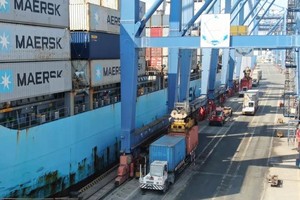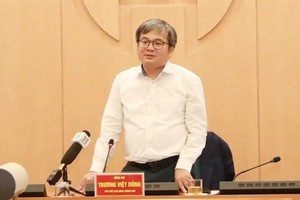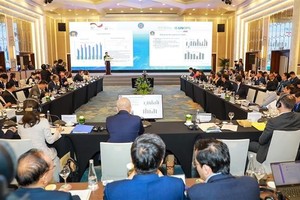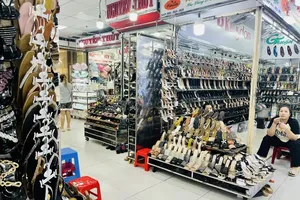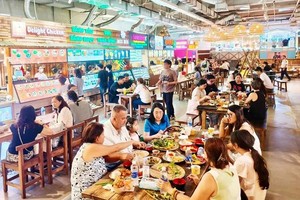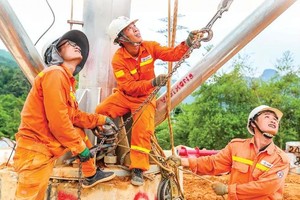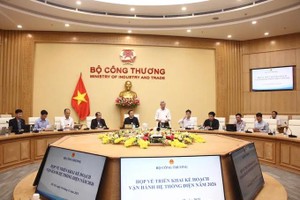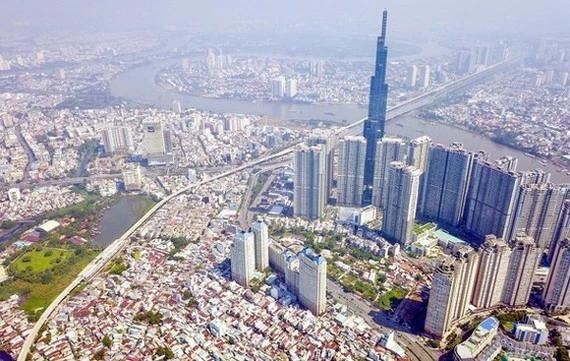
These recommendations are based on the contents of the National Assembly’s Resolution 98/2023/QH15, which regulates piloting a number of specific mechanisms and policies for Ho Chi Minh City's development.
The rapid advancements in digital technology, accelerated by the Covid-19 pandemic, have opened the world's eyes to the transformative potential of artificial intelligence (AI). Simultaneously, the semiconductor industry has emerged as a critical priority for the global economy, serving as an indispensable input for the production of many vital industries.
In the global electronic circuit manufacturing process, Vietnam, with Ho Chi Minh City as a key hub, is primarily involved in the final stages of packaging and testing. While these stages are essential, they contribute less economic value compared to the earlier stages of design and manufacturing.
Thus, when choosing the semiconductor industry/integrated electronic circuit design industry, it is necessary to start from the design stage. Because Vietnam has a young workforce, access to science, technology, higher education; abundant natural resources; moreover, the Southeast Asian country is a comprehensive strategic partner of developed industrial economies which are leading in semiconductor microchips.
Despite its potential, Vietnam's lack of significant development in semiconductor device production and manufacturing poses challenges in competing internationally. The long investment timelines and technological hurdles associated with starting from the design stage make it difficult to implement effective strategies. To overcome these limitations, Vietnam must prioritize technological breakthroughs and align its semiconductor industry development with its infrastructure and strategic objectives.
The semiconductor industry, a prime example of a priority sector demanding significant investment and strategic partnerships, underscores the importance of a holistic approach. While resource advantages, human capital, and strategic direction are essential, their full potential can only be realized through a robust foundation of synchronized, consistent, and effective policies and initiatives. This will facilitate timely implementation and attract strategic investors, propelling the semiconductor industry forward.
Specifically, the city offers strategic investors incentives such as preferential treatment in customs procedures and tax benefits for the export and import of goods related to their investment projects. Moreover, strategic investors are also eligible to enjoy deductible expenses when calculating taxable income for research and development activities, allowing for a 150 percent deduction of the actual costs associated with these activities in the corporate income tax calculation.
It is essential to comprehensively reform investment procedures, customs regulations, taxation, and business registration processes. Additionally, it is important to implement new and transparent aspects of the national Assembly’s Resolution 98 to introduce preferential policies within the region, specifically Southeast Asia and Asia, in order to create favorable conditions for attracting investors.
Furthermore, the development scope of Ho Chi Minh City should be extended beyond its administrative limits, thereby enhancing regional connections. This approach would position provinces and cities as sources of raw materials, production hubs, and collaborative partners, while Ho Chi Minh City serves as the central area distinguished by its innovative industries, scientific advancements, and technological support for surrounding localities.
Obviously, it is necessary to avoid following the world's trends and proactively take the lead, including marketing highly competitive advantages, clearly recognizing the city's resources associated with the green growth strategy, that is, balancing the economic - social - environmental benefits and room for development in sharing experiences and visions with the region and the world.
The city can therefore compile a comprehensive list of investment and development opportunities, which may include the establishment of an Innovation Center and a Research and Development Center (R&D). This center would serve as a hub for various industries and fields, such as Information Technology, Biotechnology, Automation Technology, New Materials Technology, Clean Energy, and the Semiconductor Integrated Circuit Industry.
Additionally, it would focus on the design and production of components, integrated electronic circuits (IC), flexible electronics (PE), chips, advanced battery technologies, and new materials. A significant emphasis will also be placed on investing in marine infrastructure, particularly with the development of the Can Gio International Transit Port.
When selecting investors, city administrations should consider not just their capital, but also their ability to operate in industries critical to the city's future, such as cultural and high-tech agricultural sectors. While these investors may not meet the criteria for traditional strategic investors, they can still provide valuable advantages in attracting important emerging industries to the city.






